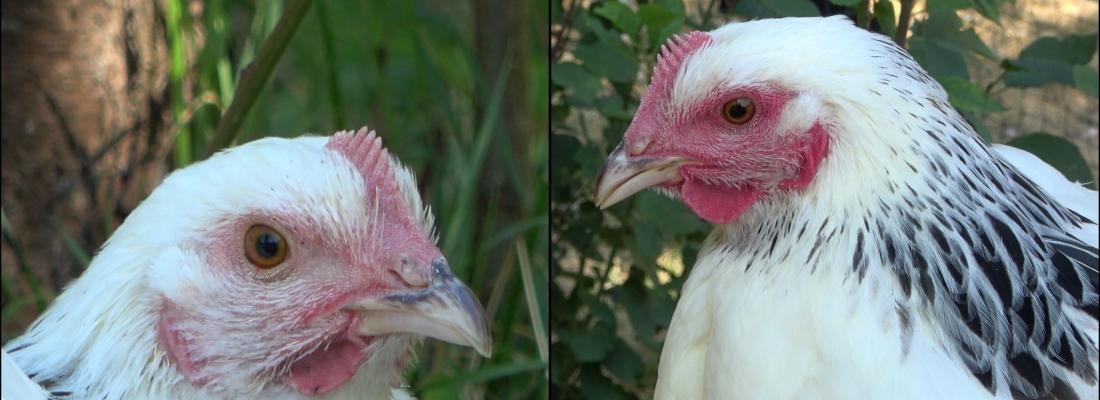Follow us on Google News (click on ☆)
These findings, which provide insights into assessing animal welfare, were published on April 21 in the Applied Animal Behaviour Science journal.

Illustration of Chickens blushing with emotions
© INRAE - Bertin and Arnould
The study of emotions in animals is a complex field of research, still relatively unexplored in birds, despite observations of blushing in previous studies of the blue macaw. An INRAE research team focused on the domestic chicken, specifically the Sussex breed known for egg-laying, to determine if this phenomenon also occurs in chickens.
In the heart of a 3,905 square feet (363 m2) orchard in the Loire Valley, six 3-4 month old Sussex chickens were observed and filmed over three weeks in various situations, from being offered highly desirable food to being captured. Working with two additional chicken breeds, the team isolated 18,000 images to feed and develop a program capable of detecting chicken profiles and extracting them automatically. A software was then used to measure the redness levels on the skin areas of the chickens' faces from the photos.
As a result, the chickens indeed show blushing, which varies according to their emotional state. Faced with appetizing food such as mealworms, the chickens blush, but their entire faces turn scarlet during a negative experience such as capture. However, in a resting context, their skin appears much clearer.
Assessing animal welfare
Armed with this new knowledge, the researchers explored the human-animal relationship. In an experimental setting, a group of 13 Sussex chickens was accustomed to the presence of an experimenter over five weeks. Unlike other groups that did not have this preparation, this group subsequently exhibited clearer faces, indicating a calmer state in his presence.
This indication may suggest a more positive perception of human presence compared to chickens unaccustomed to humans, and could serve as a new tool for assessing animal welfare.
The research opens up several possibilities, starting with the description of all potential expressions of chickens, particularly by studying the movement of head feathers in addition to skin color during positive situations like play, or negative ones such as frustration (e.g., appetizing food visible but unreachable), or chronic stress.
Researchers would also like to understand the function of these blushing signals within the species itself, particularly during social interactions involving dominance and submission.
Reference:
Soulet D., Jahoui A., Guabiraba R., et al. (2024). Exploration of skin redness and immunoglobulin A as markers of the affective states of hens. Applied Animal Behaviour Science, DOI 106268.
https://doi.org/10.1016/j.applanim.2024.106268
Arnould C., Love S., Piégu B., et al. (2024). Facial blushing and feather fluffing are indicators of emotions in domestic fowl (Gallus gallus domesticus), Zenodo,
https://doi.org/10.5281/zenodo.11057983 [This article is a preprint, a version that has been submitted to a journal but not yet peer-reviewed]